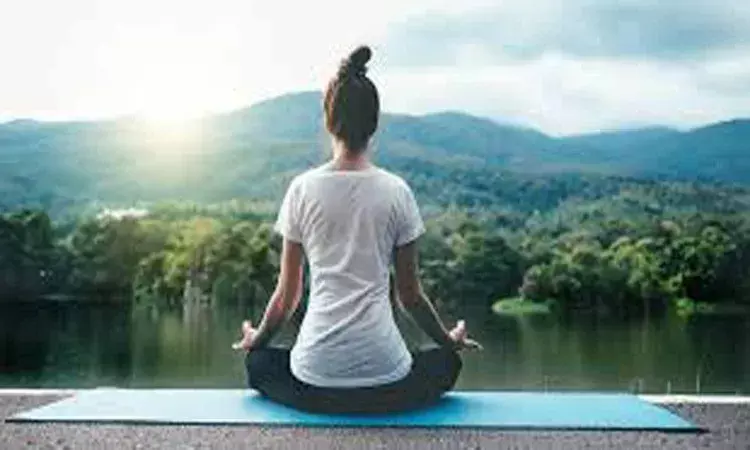- Home
- Medical news & Guidelines
- Anesthesiology
- Cardiology and CTVS
- Critical Care
- Dentistry
- Dermatology
- Diabetes and Endocrinology
- ENT
- Gastroenterology
- Medicine
- Nephrology
- Neurology
- Obstretics-Gynaecology
- Oncology
- Ophthalmology
- Orthopaedics
- Pediatrics-Neonatology
- Psychiatry
- Pulmonology
- Radiology
- Surgery
- Urology
- Laboratory Medicine
- Diet
- Nursing
- Paramedical
- Physiotherapy
- Health news
- Fact Check
- Bone Health Fact Check
- Brain Health Fact Check
- Cancer Related Fact Check
- Child Care Fact Check
- Dental and oral health fact check
- Diabetes and metabolic health fact check
- Diet and Nutrition Fact Check
- Eye and ENT Care Fact Check
- Fitness fact check
- Gut health fact check
- Heart health fact check
- Kidney health fact check
- Medical education fact check
- Men's health fact check
- Respiratory fact check
- Skin and hair care fact check
- Vaccine and Immunization fact check
- Women's health fact check
- AYUSH
- State News
- Andaman and Nicobar Islands
- Andhra Pradesh
- Arunachal Pradesh
- Assam
- Bihar
- Chandigarh
- Chattisgarh
- Dadra and Nagar Haveli
- Daman and Diu
- Delhi
- Goa
- Gujarat
- Haryana
- Himachal Pradesh
- Jammu & Kashmir
- Jharkhand
- Karnataka
- Kerala
- Ladakh
- Lakshadweep
- Madhya Pradesh
- Maharashtra
- Manipur
- Meghalaya
- Mizoram
- Nagaland
- Odisha
- Puducherry
- Punjab
- Rajasthan
- Sikkim
- Tamil Nadu
- Telangana
- Tripura
- Uttar Pradesh
- Uttrakhand
- West Bengal
- Medical Education
- Industry
Yoga sign- Dermatological menifestations of yoga posture

Yoga sign- An entity to remember
Cross‑legged sitting on hard uncarpeted floors for prolonged periods while meditating, eating and for leisurely social interaction is a very common cultural practice in India. Though sitting on chairs, sofas, and dining chairs are common in urban areas it is not the same in rural areas.
"Yoga sign" refers to pigmented callosities on the skin over the lateral malleoli, and at times over the fifth metatarsal and phalangeal bones due to cross‑legged sitting on hard floors which was recently described in the Indian Dermatology Online Journal.
Bony protuberances like lateral malleoli create outward pressure on the skin resulting in friction between the hard floor and the skin over it during cross‑legged sitting. Repeated shearing forces, friction, and pressure leads to hyperkeratosis which further increases pressure, creating a vicious cycle of friction, pressure, and thickening of the skin. Unlike in corns these are distributed over a much broader area (>1 cm2).
Yoga sign is often unilateral because of a dominant lateral malleolus that is subjected to more pressure friction. The authors also noted that many patients showed secondary phenomena over these sites such as lichen planus, psoriasis, and eczema in order of frequency. The authors proposed that these callosities resulting from chronic blunt injury of pressure and friction are locus minoris resistentiae (sites of less resistance) for certain dermatoses to preferentially localize over them like Koebner phenomenon.
The phenomenon could possibly be explained by the localization of resident memory T‑cells in the callosities, which are the result of repeated blunt trauma, especially in cases of lichen planus and psoriasis.
The authors saw a marked reduction in the degree of hyperkeratosis and hyperpigmentation by relieving pressure and friction using thick, soft, padding under the callosities. The authors also advise for long‑term application of 6% salicylic acid ointment and 10% urea cream daily.
While conventional treatment for secondary dermatoses is adequate even if somewhat prolonged, complete resolution of the callosities and hyperpigmentation seems an unrealistic goal.
Source- Verma SB, Wollina U. Yoga sign-A locus minoris resistentiae to remember. Indian Dermatol Online J 2021;12:760-1.
MBBS
Dr Manoj Kumar Nayak has completed his M.B.B.S. from the prestigious institute Bangalore medical college and research institute, Bengaluru. He completed his M.D. Dermatology from AIIMS Rishikesh. He is actively involved in the field of dermatology with special interests in vitiligo, immunobullous disorders, psoriasis and procedural dermatology. His continued interest in academics and recent developments serves as an inspiration to work with medical dialogues.He can be contacted at editorial@medicaldialogues.in.
Dr Kamal Kant Kohli-MBBS, DTCD- a chest specialist with more than 30 years of practice and a flair for writing clinical articles, Dr Kamal Kant Kohli joined Medical Dialogues as a Chief Editor of Medical News. Besides writing articles, as an editor, he proofreads and verifies all the medical content published on Medical Dialogues including those coming from journals, studies,medical conferences,guidelines etc. Email: drkohli@medicaldialogues.in. Contact no. 011-43720751


